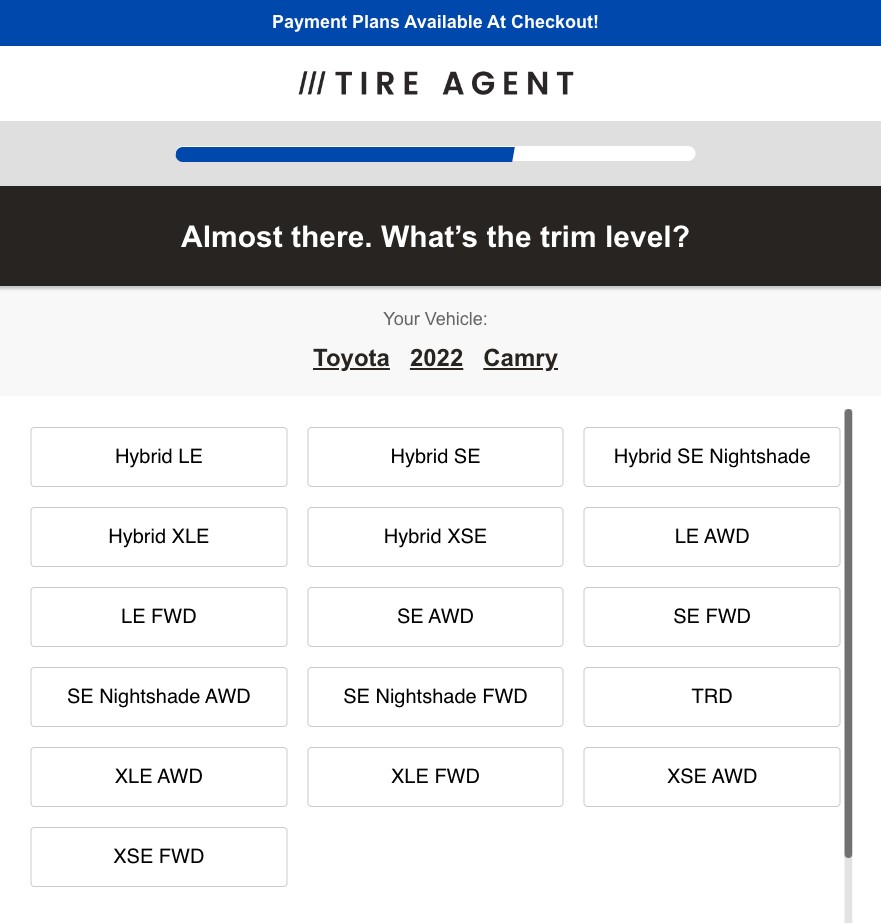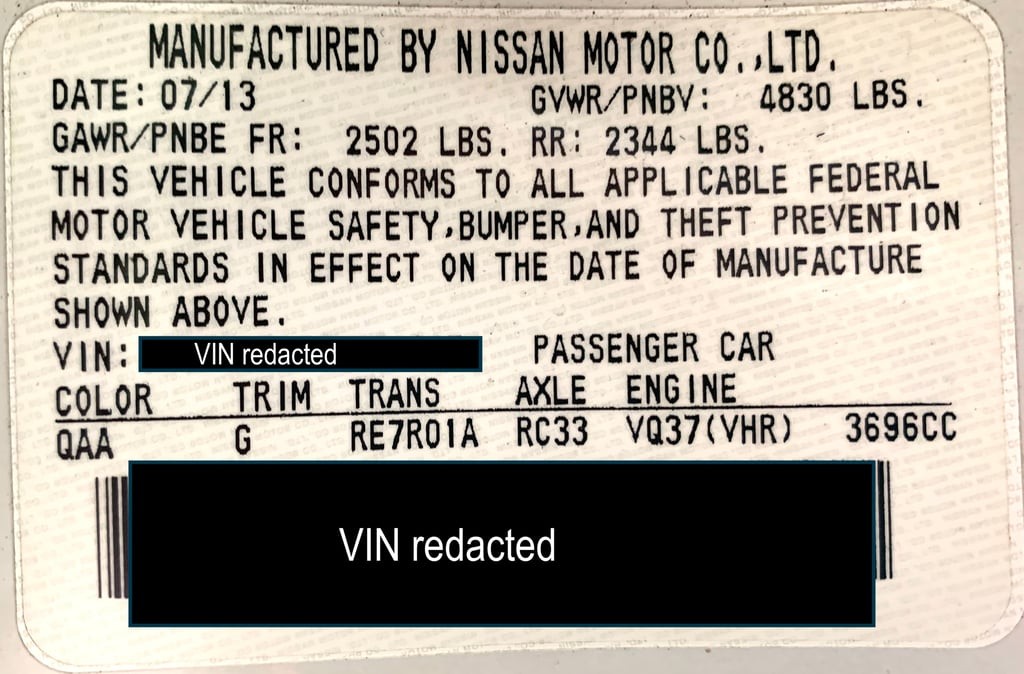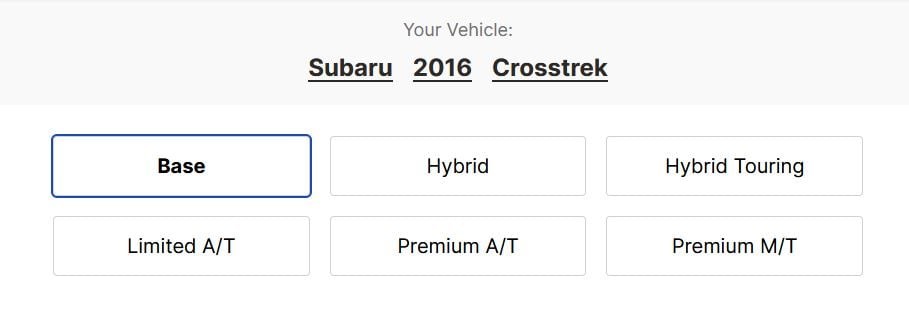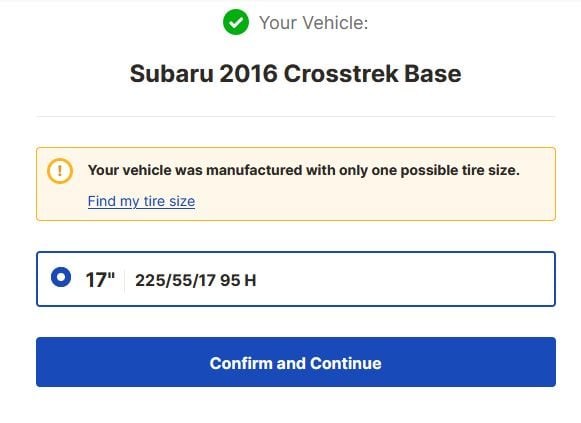Vehicle trim levels can be confusing for many car owners, yet understanding them is crucial, especially when it comes to maintenance and purchasing parts like tires. You might know you drive a Honda Civic, but do you know if it’s an LX, EX, Sport, or Touring? These designations are trim levels, and they represent more than just different badges on your car. They signify variations in features, specifications, and even the components used in your vehicle, including tire sizes.
 Toyota Camry has 16 trim levels, and not all have the same wheel and tire sizes.
Toyota Camry has 16 trim levels, and not all have the same wheel and tire sizes.
At cardiagnosticnearme.com, we understand that knowing your car’s trim level is essential for accurate diagnostics and repairs. For instance, when you need to replace your tires, simply knowing your car’s make and model isn’t enough. Different trim levels often come with different factory-recommended tire sizes. Using the wrong tire size can impact your vehicle’s performance, safety, and even fuel efficiency. That’s why confirming your vehicle trim is a vital step before ordering tires or seeking specific repair information.
This article will delve into the concept of vehicle trim, explain what it truly means, guide you on how to find your vehicle’s trim level, and clarify why it’s so important, especially in relation to tire selection and overall vehicle maintenance.
Decoding Car Trim: What Does Trim Level Really Mean?
Vehicle trim levels are essentially different versions of a specific car model offered by the manufacturer. Think of it as variations within the same model line, designed to cater to different customer preferences and budgets. When you’re buying a new car, dealerships often present you with various trim options, allowing you to choose based on desired features and price point.
The term “trim” might suggest cosmetic differences, but trim levels encompass much more than just aesthetics. They can influence a wide range of vehicle characteristics, including:
- Engine and Performance: Higher trim levels might offer more powerful engines or performance-oriented features. For example, a “Sport” trim will likely have a different engine or suspension setup compared to a base “LE” trim.
- Interior Features and Technology: Trim levels significantly impact interior comfort and technology. Higher trims often include premium upholstery (leather vs. cloth), advanced infotainment systems, upgraded sound systems, and driver-assistance technologies.
- Exterior Styling and Components: While some exterior changes are cosmetic, trim levels can also affect functional exterior components. This could include different wheel designs, headlight types (LED vs. halogen), sunroof availability, and even aerodynamic enhancements.
- Mechanical Components: In some cases, trim levels can influence mechanical aspects beyond the engine. This might include differences in the transmission, drivetrain (e.g., all-wheel drive availability), or braking systems.
Consider the example of the Toyota Camry again. A base model Camry LE is designed for efficiency and affordability, while a Camry TRD (Toyota Racing Development) trim is built for sportier driving. Despite being the same model, they offer vastly different driving experiences and features, reflected in their trim designations.
The table below illustrates some key differences between a 2022 Toyota Camry LE and a 2022 Toyota Camry TRD:
| Feature | 2022 Toyota Camry LE (Gas) | 2022 Toyota Camry TRD |
|---|---|---|
| Engine | 203-hp, 2.5-liter, 4-cylinder | 301-hp, 3.5-liter, V6 |
| Drivetrain | Front-wheel drive | Front-wheel drive |
| Front Wheel Size | 17 × 7.5 in | 19 × 8.5 in |
| Rear Wheel Size | 17 × 7.5 in | 19 × 8.5 in |
| Front Tire Size | P215/55VR17 | P235/40VR19 |
| Rear Tire Size | P215/55VR17 | P235/40VR19 |
| Base Curb Weight | 3,310 lbs | 3,575 lbs |
As you can see, the trim level directly affects crucial aspects like engine power and, importantly, tire and wheel sizes. Manufacturers specify different tire sizes for different trims to optimize performance, handling, and safety characteristics tailored to each version of the vehicle. Some trims might be designed for better fuel economy, while others prioritize handling or load-carrying capacity, necessitating different tire specifications.
Why Your Car Trim Level is More Than Just a Badge
Understanding your car’s trim level is not just about knowing the fancy nameplate on the back of your vehicle. It’s fundamentally important for several practical reasons, especially when it comes to maintenance and safety. One of the most critical aspects affected by trim level is tire size compatibility.
Using the incorrect tire size for your vehicle, even if it seems “close enough,” can have serious consequences. Tires are engineered to work in conjunction with your vehicle’s suspension, braking system, and overall dynamics. Mismatched tires or incorrect sizes can lead to:
- Compromised Safety: Incorrect tires can negatively impact braking performance, handling stability, and traction, especially in adverse weather conditions. This increases the risk of accidents.
- Uneven Tire Wear: Mismatched sizes or tires not designed for your trim’s weight and performance characteristics can wear unevenly and prematurely, requiring more frequent replacements.
- Ride Discomfort and Handling Issues: You might experience a less comfortable ride, reduced steering responsiveness, and unpredictable handling.
- Fuel Efficiency Reduction: Incorrect tire sizes can increase rolling resistance, leading to decreased fuel economy.
- Speedometer and Odometer Inaccuracy: Tire size affects the circumference of the wheel, which directly impacts the accuracy of your speedometer and odometer readings.
- Potential Mechanical Damage: In extreme cases, incorrect tire sizes can strain suspension components or even cause damage to the vehicle’s drivetrain, especially in all-wheel-drive vehicles.
Therefore, accurately identifying your vehicle’s trim level is not just a matter of curiosity; it’s a crucial step in ensuring you maintain your vehicle safely and effectively, particularly when replacing tires or seeking specific repair information.
Finding Your Car Trim: Your Guide to Locating Trim Information
Locating your car’s trim level is usually straightforward, as manufacturers provide this information in several accessible places. Here are the primary locations where you can find your vehicle’s trim:
 The vehicle trim is found in multiple places.
The vehicle trim is found in multiple places.
-
Exterior Vehicle Badging: Many manufacturers will display the trim level designation on the exterior of the vehicle, often on the trunk lid or tailgate. Look for badges or lettering that indicate the trim name (e.g., “Sport,” “EX,” “Limited,” “TRD”).
-
Owner’s Manual: Your vehicle’s owner’s manual is a comprehensive resource that contains detailed information about your specific car, including the trim level. It will typically be listed in the introductory sections or vehicle specifications.
-
Vehicle Identification Number (VIN): The VIN is a unique 17-character code assigned to your vehicle. It contains a wealth of information, including the trim level. You can use online VIN decoder tools to extract this information.
Decoding Your VIN for Trim Information
Your VIN is like your car’s fingerprint, holding specific details about its manufacturing and features. Numerous online VIN decoder tools are available for free, such as Decode the VIN, which can help you access your vehicle’s trim information and other specifications by simply entering your VIN.
-
Vehicle Registration and Insurance Documents: Your vehicle registration documents and insurance paperwork often include the vehicle’s make, model, year, and sometimes the trim level. Check these documents for trim information.
Other Places to Find Your Trim
-
Door Jamb Sticker: The driver’s side door jamb usually has a sticker containing important vehicle information, including the VIN, manufacturing date, and sometimes trim-related codes.
 The manufacturer’s sticker on the doorjamb, typically on the driver’s side.
The manufacturer’s sticker on the doorjamb, typically on the driver’s side. -
Sales Receipt or Window Sticker (if available): If you purchased your vehicle from a dealership, the sales receipt or the original window sticker (Monroney sticker) should clearly indicate the trim level.
-
Online Vehicle Research: If you are unsure, you can also perform an online search using your car’s make, model, and year. Manufacturer websites and automotive information resources often provide details on the different trim levels available for specific models.
Matching Tires to Your Trim: Ensuring the Perfect Fit
Once you’ve identified your vehicle’s trim level, you can confidently determine the correct tire size. Here’s how to ensure you get the right tires for your specific trim:
-
Check the Tire Placard (Door Jamb Sticker): The door jamb sticker not only contains the VIN but also displays the vehicle manufacturer’s recommended tire size(s) for your specific trim. This is often presented as a code (e.g., P215/55R17).
 Vehicle’s intended tire size on the door jamb of your vehicle.
Vehicle’s intended tire size on the door jamb of your vehicle. -
Consult Your Owner’s Manual: The owner’s manual will also list the recommended tire sizes for each trim level of your vehicle model.
-
Use a Tire Matching Tool: Online tire retailers like Tire Agent offer tire matching tools that simplify the process. You input your vehicle’s make, model, year, and trim level, and the tool will display a list of tires that are guaranteed to fit your vehicle.
 Tire Agent asks you to enter information about your vehicle to see the available tires.
Tire Agent asks you to enter information about your vehicle to see the available tires.
It’s important to remember that wheel sizes can also be trim-dependent. Higher trim levels might come with larger or different style wheels, which are designed to accommodate specific tire sizes. When using a tire matching tool, it will typically also factor in wheel compatibility.
Conclusion:
Understanding your car’s trim level is more than just knowing a designation; it’s about understanding the specific configuration of your vehicle and ensuring you maintain it correctly. Whether you’re replacing tires, seeking repair information, or simply want to know more about your car, identifying your trim level is a crucial first step. By using the methods outlined above, you can easily find your car’s trim and confidently make informed decisions about its care and maintenance, ensuring safety, performance, and longevity. And when it’s time for new tires, remember to use a tire matching tool like Tire Agent’s to guarantee a perfect fit for your specific vehicle trim.
